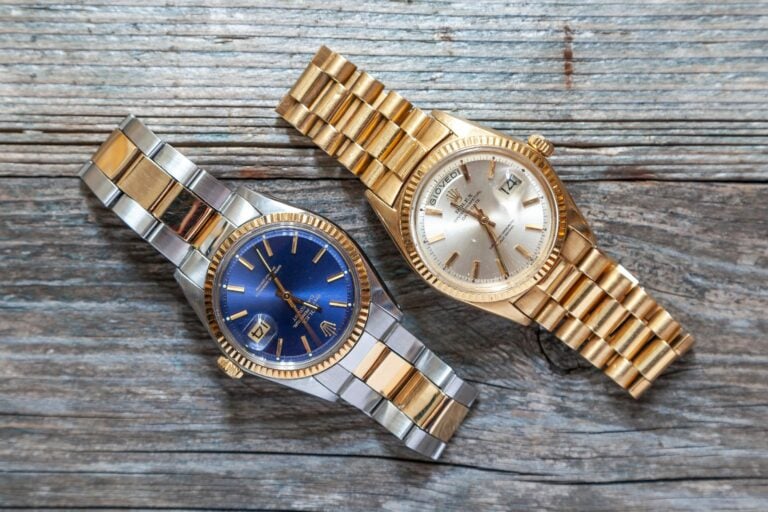What movements are used in Rolex watches?
Rolex watches are known for their high-quality movements, which are designed and manufactured by Rolex itself.
There was a time when Rolex made the Rolex Oyster Quartz model with a quartz movement. There was also a time when Rolex used third-party movements, but today Rolex uses only in-house mechanical movements.
All Rolex movements are known for their accuracy, reliability, and durability, which is an important factor in the popularity of Rolex watches. In addition, Rolex movements are tested and certified by the official Swiss chronometer testing body (COSC) to ensure their accuracy and precision.
How often should I service my Rolex watch?
Rolex recommends that you service your Rolex watch approximately every 10 years. However, the actual frequency of maintenance can depend on a number of factors, including usage, exposure to certain environments, and the model of the watch. If you notice any problems with the timekeeping or performance of your Rolex watch, you should have it serviced by an authorized Rolex service centre.
It’s important to have your Rolex serviced by a trained and authorized professional to ensure that it’s properly maintained and retains its value. When owning a Rolex, you also do not have to worry too much about selling the watch, as there is always high demand for Rolex watches on the secondary market due to the limited supply from new. You can sell quickly to Rolex buyers, like ourselves, Rather than waiting for your watch to sell.
How long does a Rolex watch last?
Rolex watches are known for their high-quality construction and longevity. With proper care and maintenance, a Rolex watch can last generations. Rolex watches are built to withstand wear and tear, and many old Rolex watches are still in excellent condition. The lifespan of a Rolex watch can depend on a number of factors, including usage, maintenance, and the particular model of the watch.
Overall, with proper care and maintenance, a Rolex watch can last a lifetime and even be passed down as a family heirloom.
Is buying a Rolex watch a good investment?
Buying a Rolex watch can be a good investment, but it’s important to remember that it’s not a guaranteed investment. The value of a Rolex watch can fluctuate depending on the model, rarity, condition, and market demand.
Some Rolex watches, such as vintage models or limited edition models, may increase in value over time, while others may decrease in value. However, it’s important to know that a Rolex watch is primarily meant to be a luxury watch, not an investment.
If you’re considering buying a Rolex watch solely as an investment, it’s important to do your research and consult an expert to ensure you’re making an good decision.
What makes Rolex watches so expensive?
Rolex watches are known for their high prices, and there are several factors that contribute to their cost. Some of the main reasons why Rolex watches are so expensive are:
- High quality materials. These materials are more expensive and more difficult to work with than those used by many other watch brands.
- In-house manufacturing. Rolex makes almost all of the components of its watches in-house, which requires significant investment in equipment, technology, and skilled labour.
- Precision and testing. Rolex watches are known for their precision and reliability, and the brand rigorously tests each watch for accuracy and quality.
- Brand heritage and status. Rolex is one of the most recognizable luxury watch brands in the world, and its watches are often associated with luxury, quality, and prestige.

